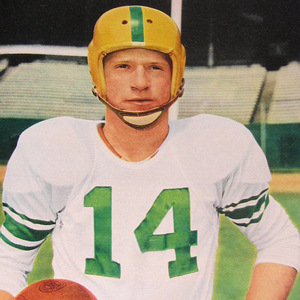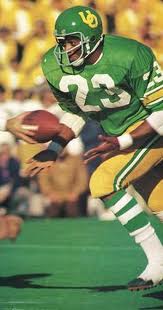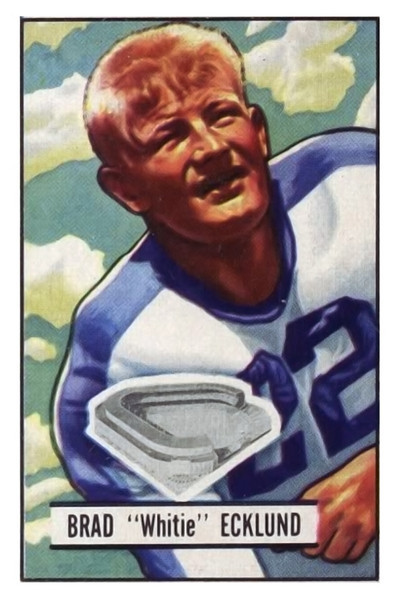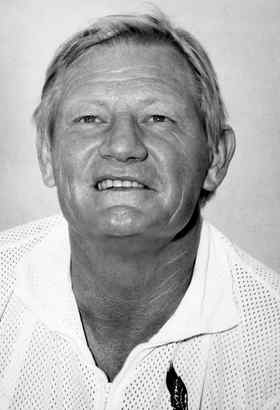Where I Come From: Wouldn't Want to Go Back
(Originally posted 7/11/10 on Addicted to Quack) As the reader may have inferred by now. I like looking back as much as anyone — probably more than most. But my favorite team is always the one I’m looking forward to seeing this fall. Just like last year, and the year before that. We’re in a golden age right now, as far as Our National Obsession is concerned. I didn’t realize it at the time, but it must have really sucked to be a college football fan in 1985. (I pick ‘85 because anybody old enough to have been a fan in ‘85 will, like me, likely be sitting in his rocking office chair quietly issuing affirmations between hits of Metamucil. Since most of the rest of you don’t go back much farther than The Pick, if you’re being honest, 25 years or so is a nice generational timespan for reflection. And in many ways, 1985 wasn’t a lot different than 1960, so it’s a reasonable proxy.) BYU was the defending national champion. That’s a good place to start. OK, enough of that. Division 1-A was beginning to show signs of parity not seen since the pre-WWII era. In contrast with the 70s, when “That Old Gang of Nine” — Oklahoma, ‘Bama, Michigan, Nebraska, USC, tOSU, ND, Texas and Penn State — dominated the polls and provided a decade of boring elitist football, a number of semi-traditional powers had begun asserting themselves by the mid-80s. Florida went from winless in ‘79 to SEC champs in ‘84 to probation in ‘85. SMU was in its pre-death-penalty heyday as the dominant program in Texas. Iowa was competitive in the Big10, Maryland in the ACC, and Washington was the dominant program in the Pac-10 with USC on probation. Notre Dame’s death spiral had commenced under Gerry Faust. The SEC was in the midst of a national championship drought that went from 1980 (Georgia) to 1992 (Bama). “The U” dominated football in the South for a decade.
The extent of Oregon’s 1985 prospects were summed up in the SI preview issue:
The Quack Attack is back at Oregon, where a full house returns in the backfield, including tailback Tony Cherry, who averaged 6.5 yards per carry in 1984. Who knows? The routinely ugly Ducklings could finish in the upper division.
(They didn’t.)
Nationally, the sport was mixing itself up. Parity had arrived, thanks in large part to scholarship limits that kept the big boys from putting 50 players on a free ride every year.
But in 1985, hardly anyone could get in on the fun.
The NCAA for decades held a stranglehold on televised games — only allowing eight nationally televised games per year, along with five regional games, to be broadcast on the major TV networks during the season. With so few games broadcast, it was unusual to see anything unusual. But in 1985, a year after the Supreme Court ended the NCAA scheduling monopoly, the College Football Association — essentially, Division 1-A minus the Big10 and Pac-10 — took over de facto control of broadcast rights. The CFA hooked up with ABC; the Not-CFA went to CBS. Cable channels, like the young but growing ESPN, picked up the CFA scraps.
Not many of those scraps were fed to Pac-10 fans. Admittedly, the Pac kind of stank in ‘85, with only one team in the national top 5 all year — USC, for just two weeks in September — so we weren’t missing much. The league was still shaking off the dust from the probation years. Although Washington finished #2 in 1984, the only ranked team at the end of ‘85 was #7 UCLA.
Regardless, Tom Hansen didn’t exactly assert himself as a rookie commish of the conference when it came to TV exposure. (Some things never change.) And you hardly ever saw a TV game with Pac-10 teams, unless it was USC vs Notre Dame, which managed to get on the air every year.
A typical 1985 TV game schedule looked like this one, from October 19, if you lived in Eugene:
- 9am Purdue @ Ohio St (KVAL)
- 9:30 Tennessee @ Alabama (TBS)
- 9:30 Army @ Notre Dame (USA)
- 9:30 Minnesota @ Indiana (KECH-22)
- Noon Miami @ Oklahoma (KEZI)
- 12:30 Michigan @ Iowa (KVAL)
- 4:00 Kentucky @ LSU (ESPN)
That’s all, folks. This was viewed as an improvement. (In 1977, Oregon’s game at Stanford was on ABC. It was the *only* college football game seen in Eugene that day, on any channel.)
Still, the new broadcast arrangements at least made it possible for games to be “telecast” regionally. But even games that were “on TV” wouldn’t necessarily make it onto *your* TV. Reason? Blackouts.
In 1985, Oregon’s first game — a late August date at WSU — was televised nationally on WTBS. That was the only TV appearance within the state of Oregon for the Ducks all season. A September game at Autzen against Stanford was televised.. in Northern California, for Stanford’s benefit. It was broadcast on the Bay Area station KTVU, a channel carried on cable systems in Oregon, but the game was blacked out north of the border. Nobody wanted to jeopardize the gate back in the day, and with good reason; a team as numbingly average as Oregon was in the 1980s couldn’t expect to come close to selling out home games. The ‘84 team that went 6-5 didn’t attract more than 30,000 all year. Why give folks another reason to stay home?
If you wanted to see Oregon play, you needed to get your ass to a game. (You could occasionally catch a rebroadcast of a game; when Oregon tied Notre Dame in ‘82, the game was replayed on ESPN four times over the next two days [note: anyone who has this game recorded on VHS, *please* contact me]. The not-yet-World-Wide-Leader didn’t have a lot of programming depth back then, giving fans plenty of time to figure out how to program their Betamax.)
Polls? There was no “ESPN USA Today Top 25”, or any other Top 25. There was an AP Top 20, and a UPI Top 20, UPI being the “coaches” poll. The polls came out on Monday. Teams not making the top 20 were typically listed as “Others receiving votes, listed alphabetically”; you never knew, or cared, who was ranked #21.
If there was anything like sports talk radio in 1985, it hadn’t yet reached Oregon. Stations that broadcast the games would have pre-game and post-game call-ins, but nothing like the multiple 24-hour jock talk we have now.
Interested in recruiting? You could sign up with Joe Terranova and receive a mimeographed newsletter via mail, or subscribe to Max Emfinger’s “National High School Football Magazine”. Or make friends with the coaching staff. Otherwise, you had to wait until the local papers reported on your favorite school’s news conference on signing day.
As for post-season play, there wasn’t much of it. Teams had to earn their bowl bids through a combination of reputation, ass-kissing, under-the-table largesse, and sometimes actual field results. Lots of decent teams were left home when we had only 15 bowl games. The only bowls worth watching were the New Years Day games — Rose, Fiesta, Cotton, Sugar and Orange. All of which were played on New Years Day. You usually had to choose between pairs of games — on 1/1/86, you could watch the Fiesta or the Cotton at 10:30, the Rose unencumbered at 1:30, then flip between the Orange and the Sugar while you ate leftover pizza from New Years Eve for dinner, washed down with Miller Lite. If you were really techno-savvy, you had one of them “PIP” TVs that let you watch one game in a little corner of your 27” Trinitron while the other game filled the screen. More likely, you taped one game and watched the other one live.
Video games? Madden wasn’t even conceived until ‘86, and didn’t make it onto a platform until “John Madden Football” was released for the Apple II in ‘89. All we had in ‘85 were titles like “Superbowl Sunday” for the C-64, and some 8-bit pixellated crap on the Atari, if it still worked after all that bongwater you spilled on it. There was no college format game until Micro Sports released “All-American College Football” for DOS in 1991.
If you wanted games, you could play Strat-o-Matic football on the floor in your bedroom. Or haul that Electric Football game out of the closet and try to make your “quarterback” hurl that little felt “football” anywhere near your “receiver” as he slid down the vibrating metal field. Or fold up a piece of notebook paper and play Table Football in the library. Or go outside and throw a ball around.
Don’t let your parents kid you. The good old days weren’t all that good.
If, these days, it seems we have too much of a good thing, with 60+ teams in bowl games, wall-to-wall coverage from Thursday night until Saturday night, myriad web sites to dissect things before during and after, updates of recruiting status available instantly via Twitter.. well, at least it’s a good thing that there is too much of.
So, enjoy your nostalgia. It’s best served when it’s kept warm, right?


 benzduck
benzduck
















